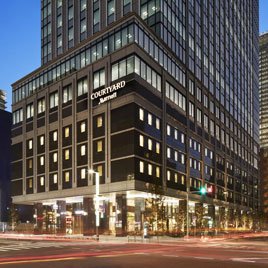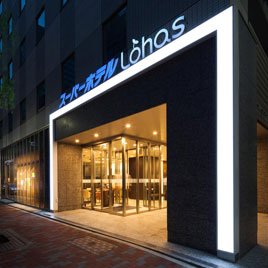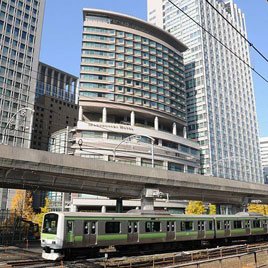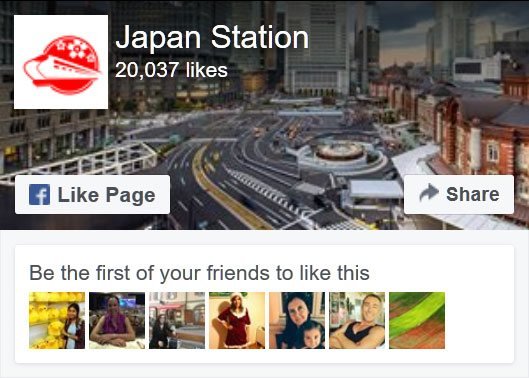It’s one of the most iconic images of modern Japan: a needle-nosed bullet train speeding past majestic Mt. Fuji, the tallest mountain in the country. The picture not only signifies a triumph of technology over nature, it symbolizes a reverence for engineering design and natural beauty that is one of the hallmarks of Japanese culture. In effect, the bullet train represents Japan itself.
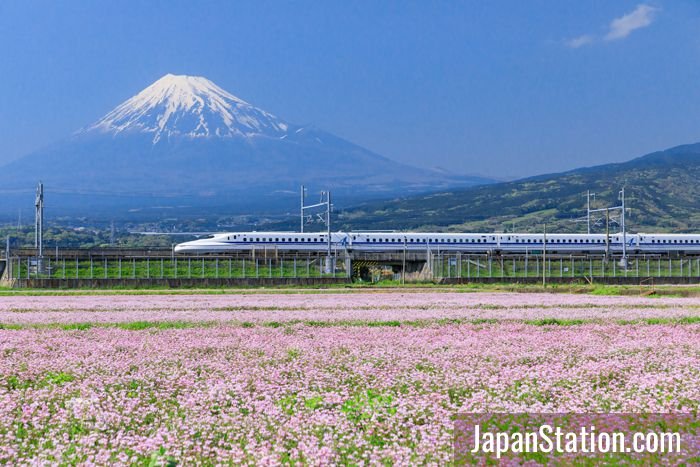
The iconic image of a shinkansen train speeding past majestic Mt. Fuji
What is the Shinkansen?
Shinkansen is the term used to describe bullet trains in Japan and it literally means “new trunk line.” Sometimes referred to as “super express” services in English, Shinkansen trains mostly run on dedicated tracks and stop only at major stations. They are operated by Japan Railways (JR) Group companies and feature some of the fastest trains in the world, traveling at up to 320 kilometers per hour.
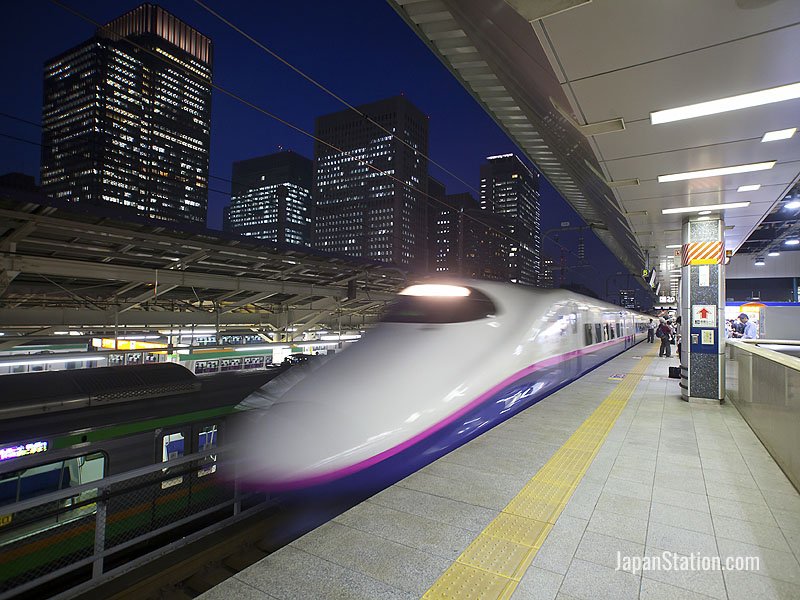
An E2 series Shinkansen train departing from Tokyo Station
Riding the Shinkansen is a remarkable experience. With your super express ticket in hand, you arrive at the dedicated Shinkansen platform, which has its own gates. The train glides into position at the station right on time (the average delay is only 36 seconds), with the doors perfectly aligned along platform markings that indicate carriage numbers. If you’re at a terminus such as Tokyo Station, after passengers disembark, a rapid-action cleaning crew gets the train ready for its next run with military precision, completing the task in a few minutes. When the embarking passengers are settled, the carriages are pressurized for high-speed travel, and the train effortlessly rolls out of the station, a bit like a horizontal rocket. Before you know it, you’re ordering refreshments in a comfortable seat as Mt. Fuji zips by outside the window. If only air travel could be this easy.

Ordering refreshments in a comfortable seat on a Shinkansen train
Bullet train services in Japan began in 1964 when the Tokaido Shinkansen Line inaugurated services between Tokyo and Shin-Osaka, just in time for the Tokyo Olympics. The original 0 Series trains had white livery and snub noses and could complete the run in 3 hours and 10 minutes, a huge improvement from 6 hours and 30 minutes with conventional trains. Today, the latest N700 trains used for Nozomi express services travel the 500 kilometers in only 2 hours, 25 minutes.
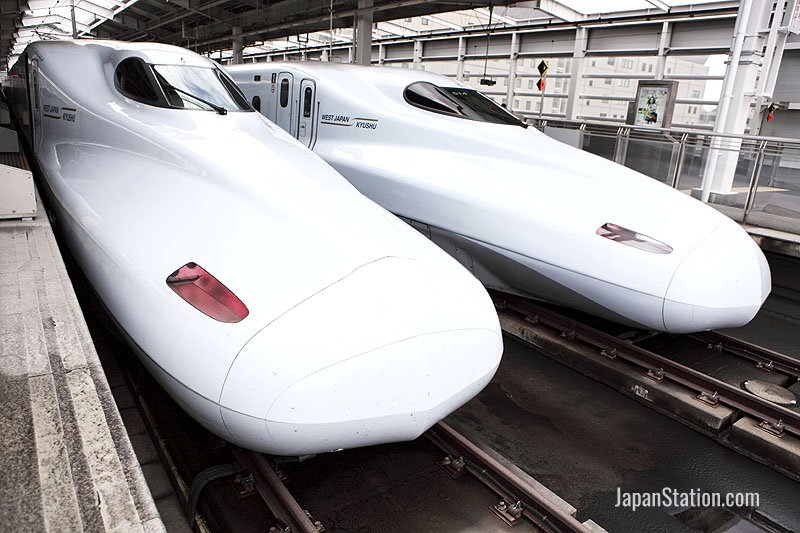
The latest N700 trains used for Nozomi super-express services
An enviable track record
In 2014, Japan’s bullet train celebrated 50 years since its launch in 1964. That half-century was nothing short of an absolute triumph for high-speed rail. The network is now the envy of many countries around the world for its speed and safety. In the 50 years of operations of the Tokaido Shinkansen Line linking Tokyo and Osaka, there were no passenger fatalities or injuries due to accidents.
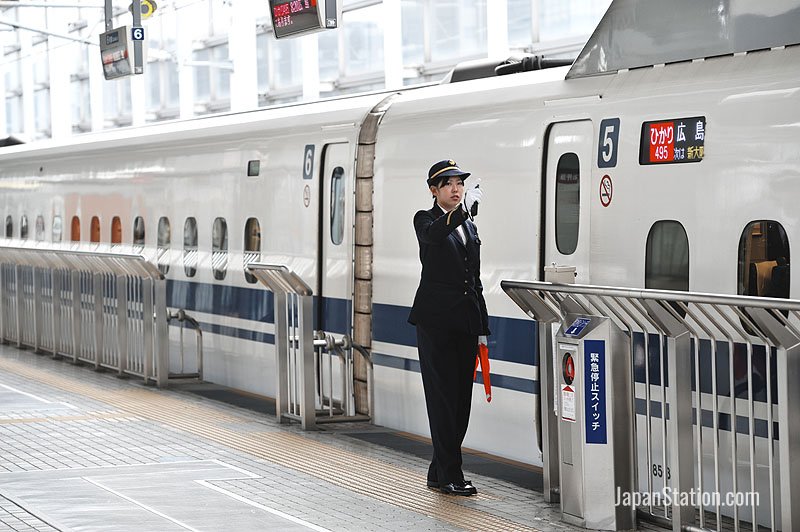
Tokaido Shinkansen Line is the busiest high-speed line in the world
That’s even more impressive when considering that the railway carries a staggering 420,000 passengers or more on a typical weekday – it’s the busiest high-speed line in the world. Japan’s bullet train is a people mover like no other, ferrying millions of passengers between cities in a quick, convenient and punctual transport system.
Building the network
Along with higher speeds, the Shinkansen has expanded in scale since 1964. Today, bullet train lines extend to nearly every corner of Japan and more are being built. In 1975, the Sanyo Shinkansen Line was completed from Shin-Osaka to Hakata Station in Fukuoka City on the southern main island of Kyushu. Through services from the Tokaido Line allow passengers to travel all the way from Tokyo to Hakata in just over 5 hours.
Another major Shinkansen route goes northward from Tokyo. The Tohoku Shinkansen, opened in sections starting in 1982, currently links the capital with Shin-Aomori in northern Honshu. An extension to Shin-Hakodate, which will go through the undersea Seikan Tunnel, will bring bullet train services to Hokkaido for the first time in March 2016; a further extension to Sapporo is planned for around 2030. Read more about Hokkaido Shinkansen.
Two “mini Shinkansen” lines were added to the Tohoku Shinkansen Line in the 1990s. Unlike regular Shinkansen, they use converted narrow-gauge track that is shared with regular trains. The Yamagata Shinkansen connects Fukushima in Fukushima Prefecture with Shinjo in Yamagata Prefecture, while the Akita Shinkansen joins Morioka in Iwate Prefecture with Akita in Akita Prefecture. Both bullet trains use part of the Tohoku Shinkansen when departing from Tokyo, and then run at slower speeds when using the shared tracks.
Popular Hotels near Tokyo Station
Other bullet trains that use the Tohoku Shinkansen tracks form part of the Joetsu Shinkansen, which extends from Omiya in Saitama Prefecture to Niigata in Niigata Prefecture. Opened in 1982, the Joetsu Shinkansen has trains that depart from Tokyo, with some going off on a very short branch line at Echigo-Yuzawa to the Gala-Yuzawa ski resort. A major offshoot of the Joetsu line is the recently inaugurated Hokuriku Shinkansen. It links Takasaki in Gunma Prefecture with Kanazawa in Ishikawa Prefecture on the Sea of Japan coast, passing through Toyama. It will be expanded to Fukui Prefecture, possibly linking to the Tokaido Shinkansen, within the next decade or two.
Kyushu has seen more bullet train development recently with the 2011 launch of the Kyushu Shinkansen between Hakata and Kagoshima. This Kagoshima Route is only one half of the Kyushu bullet train – a Nagasaki Route, or West Kyushu Route, is planned between Nagasaki City and Hakata, with a section to Takeo Onsen to open in 2023.
Shinkansen train types
There are nearly as many kinds of Shinkansen trains as there are Shinkansen lines. While they’re all super sleek, often with long nose cones, there are carriage variations such as double-decker cars and Green Cars, which is Shinkansen parlance for first class. Manufacturers include Kawasaki Heavy Industries, Hitachi, Japan Transport Engineering Company and Nippon Sharyo.
The 16-car N700 series is the flagship train for the popular Tokaido and Sanyo Shinkansen lines. With its white-blue livery and aerodynamic duckbill nose, it succeeded the 700 series, which is used on slower runs. The N700 has a top speed of 300 kilometers per hour and the ability to tilt on turns. It’s also used in eight-car arrangements on the Kyushu Shinkansen Line, which also features the 800 series, a six-car train developed by Hitachi.

E6 series Komachi train waiting to depart from Tokyo Station
The Tohoku, Joetsu and Hokuriku Shinkansen Lines are served by trains in the E2, E4 and E5 series, notable for double-decker cars (E4) and top speeds of 320 kilometers per hour (E5). Trains in the E3 and E6 series run on the Akita and Yamagata Mini-Shinkansen lines, while the E7 and W7 series operate on the Hokuriku Shinkansen.

JR West W7 series Shinkansen train at Kanazawa Station
Some Tohoku and Hokuriku Shinkansen line services offer “Gran Class” cars, which aim to provide greater luxury than Green Cars and have amenities such as complimentary gourmet bento boxes, plush seats and power outlets. But you’ll have to pay a premium for the privilege – for instance, a Gran Class ticket from Tokyo to Shin-Aomori on the Tohoku Shinkansen will cost about 10,000 yen extra.
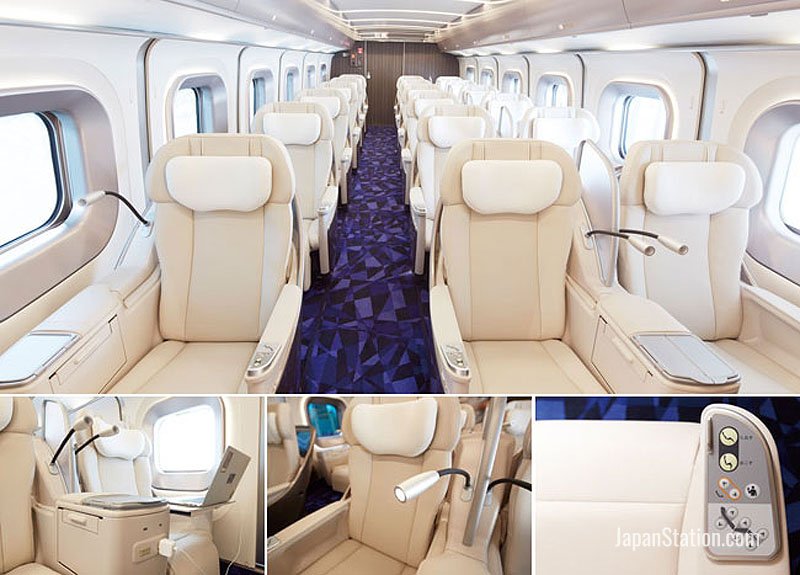
Gran Class seats on Hokkaido Shinkansen trains
The maglev era
Even though billions of dollars have been invested in Shinkansen development, Japan is eyeing the next phase in the evolution of railways – magnetically levitated trains, or maglev. JR Central, operator of the Tokaido Shinkansen, is planning a maglev line between Tokyo and Osaka with trains that would travel up to 505 kilometers per hour, reducing the journey to only 67 minutes.
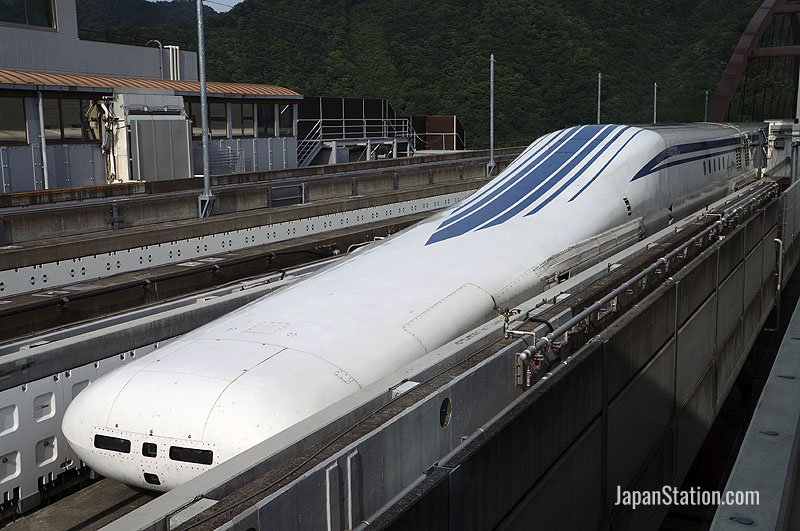
Linear motor Maglev L-0 high speed train on Yamanashi test line in Japan
Construction of this Chuo Shinkansen began in 2014 and is expected to cost at least $90 billion, with services to Nagoya beginning in 2027 and Osaka in 2045. By then the Shinkansen will be approaching a century of service bringing people all over Japan closer together.
Article by Tim Hornyak. All rights reserved.

